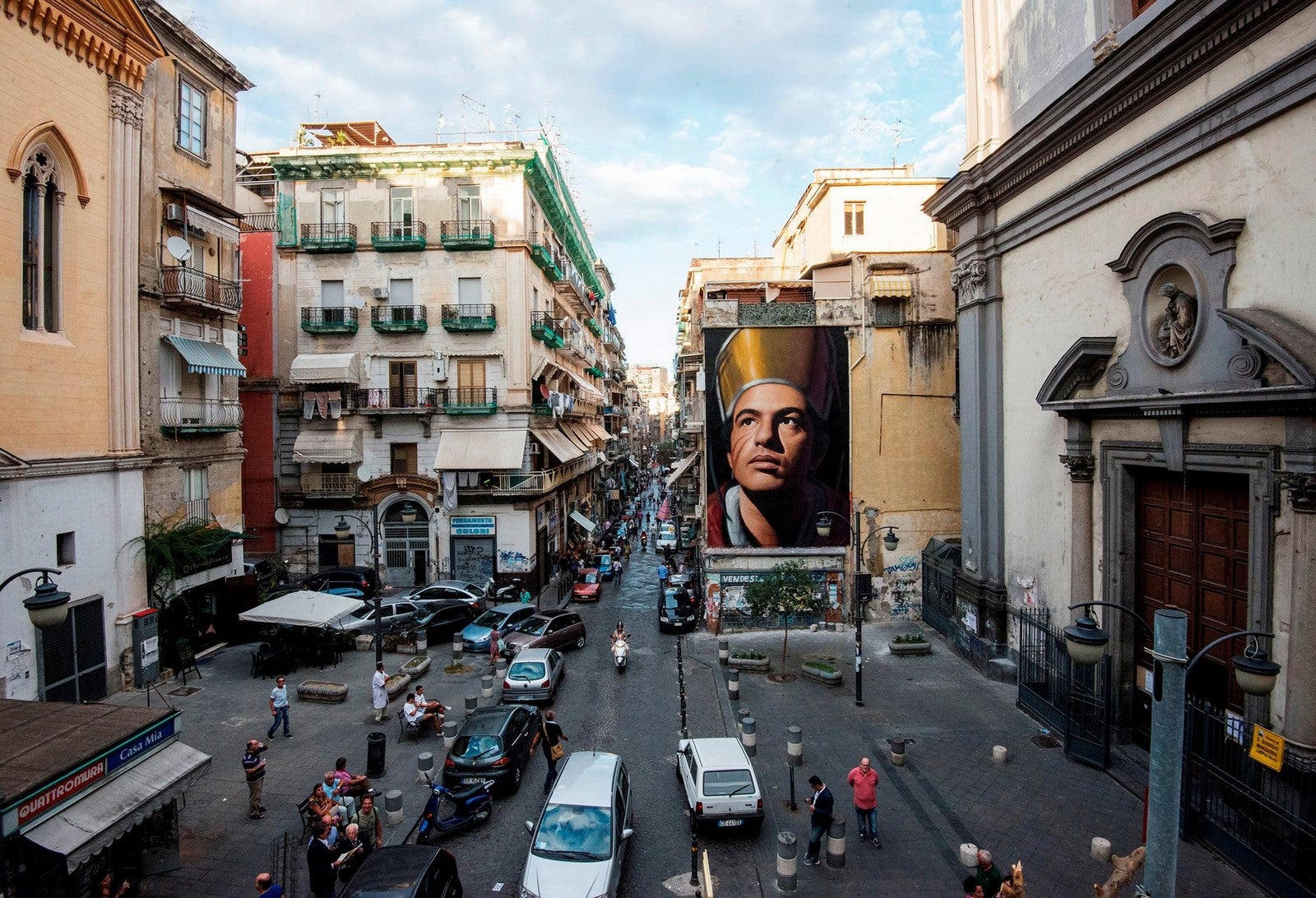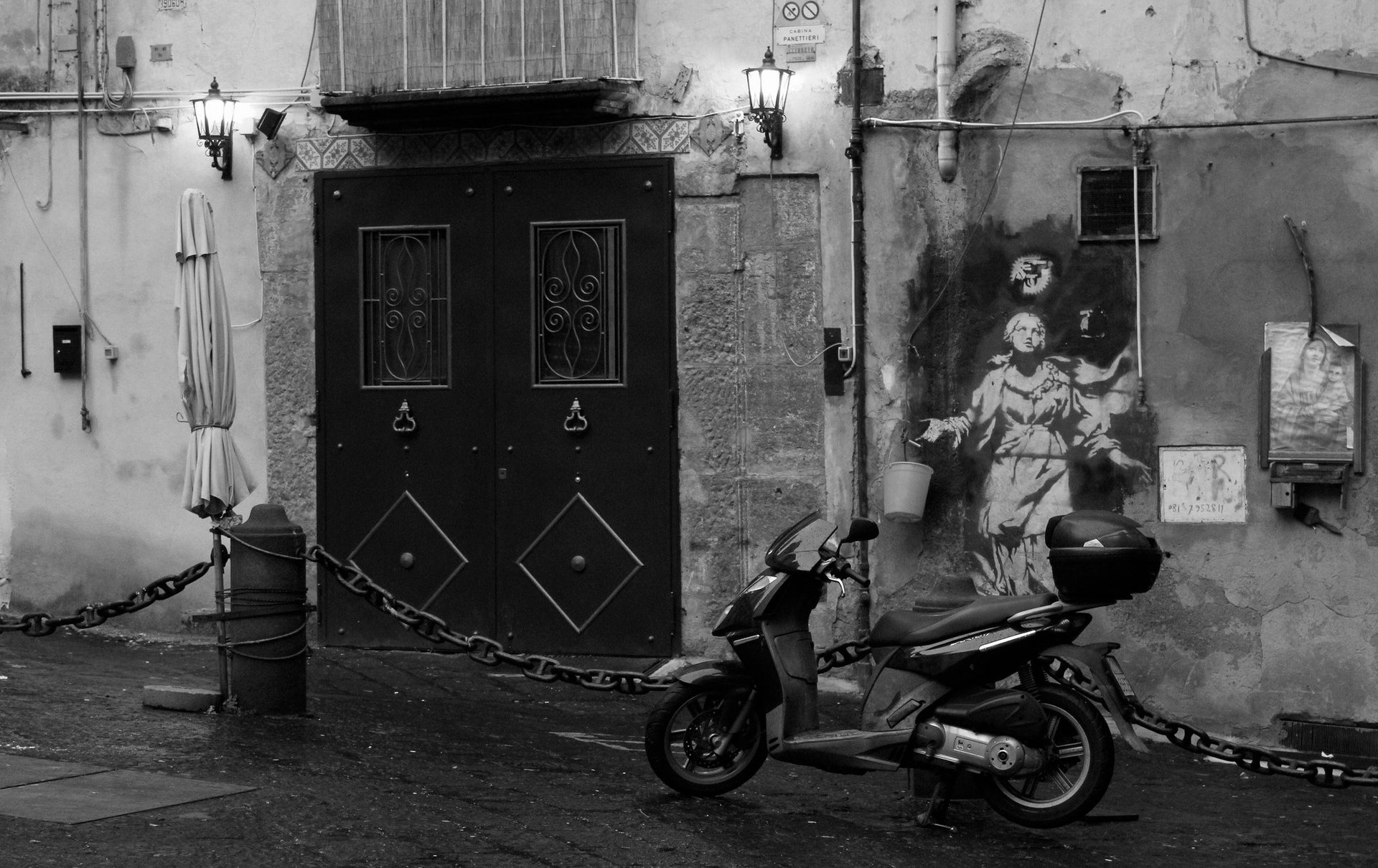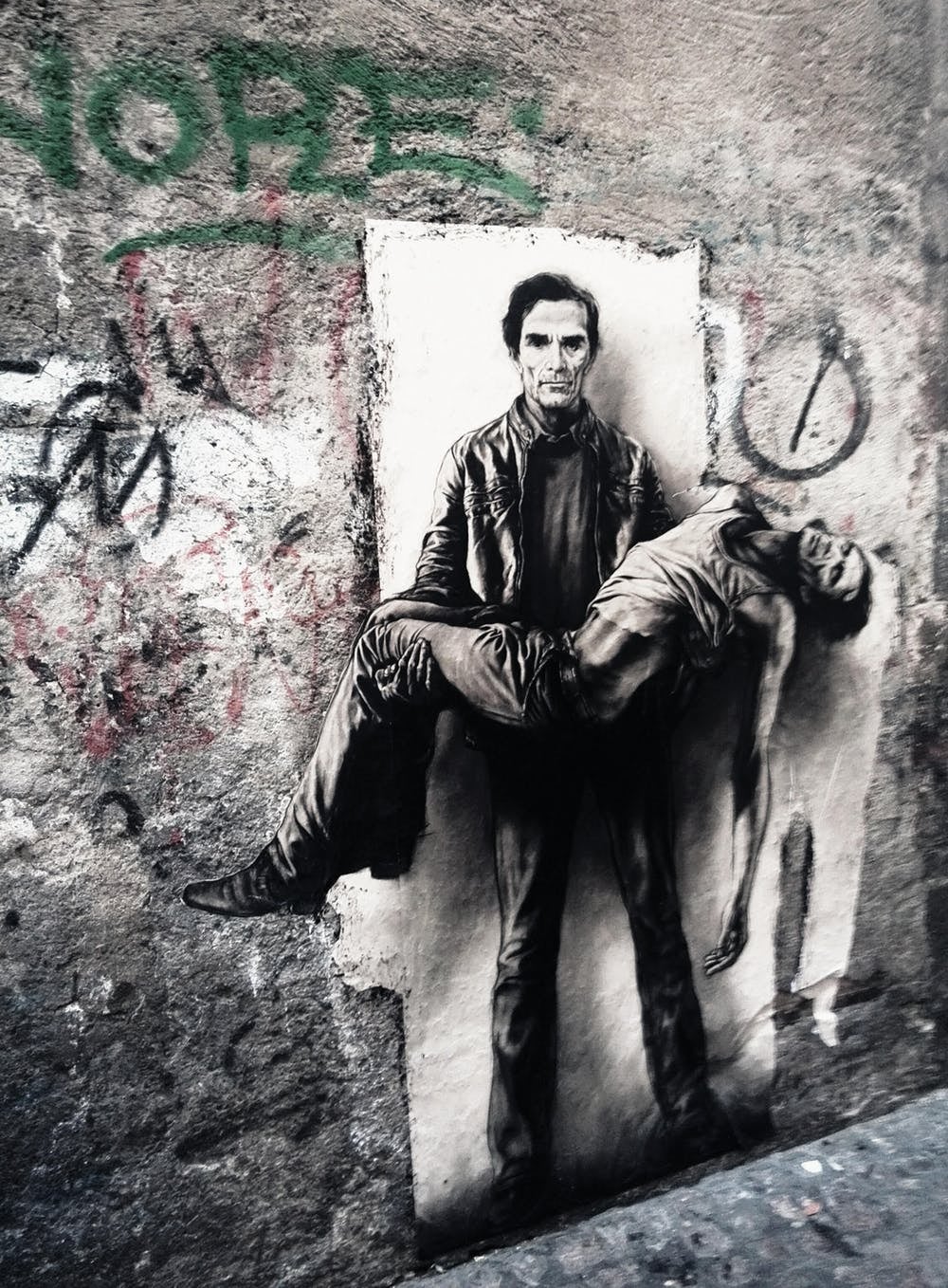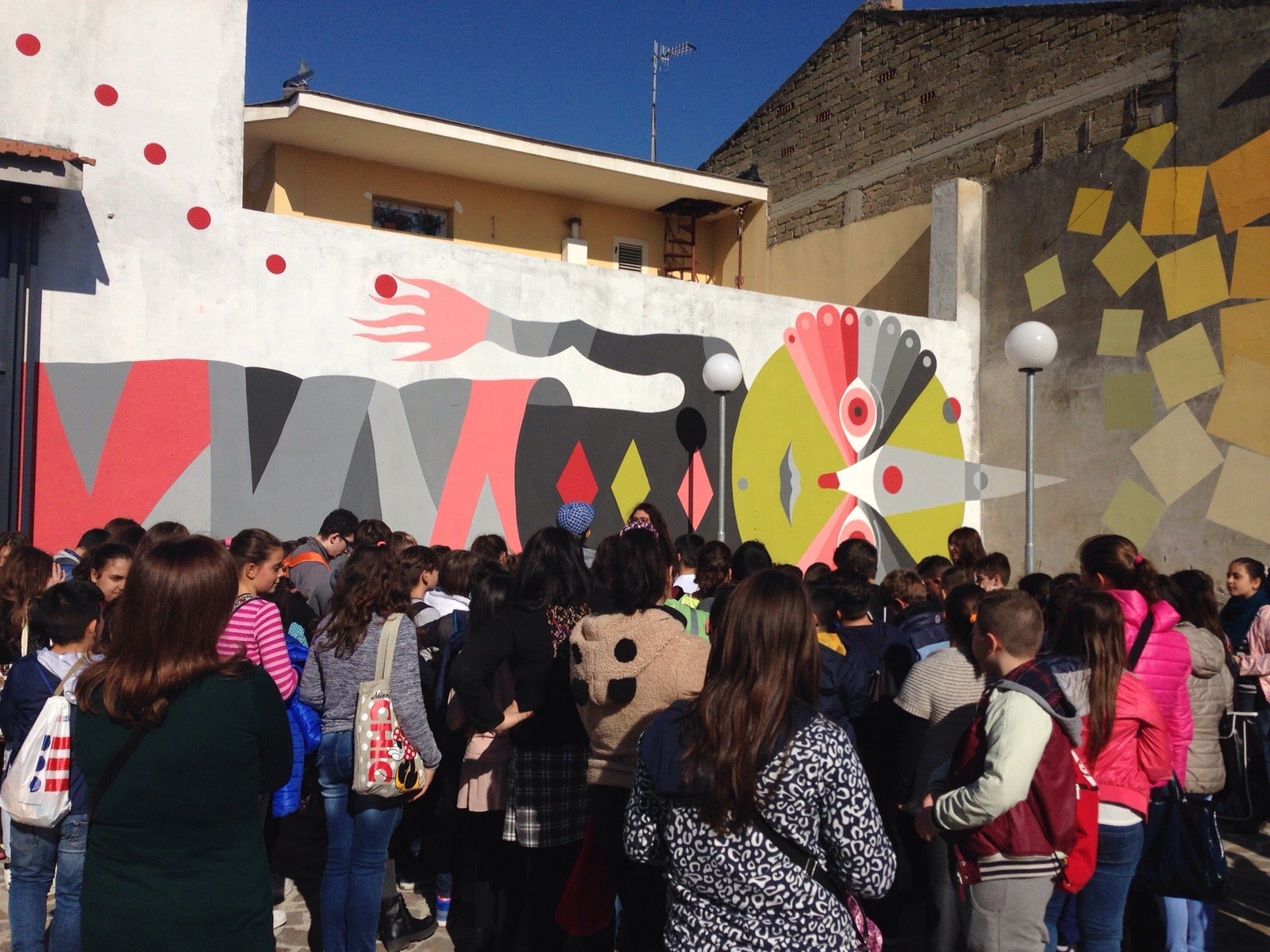In Naples, street art is giving a new voice to a city silenced by crime
In some ways, Naples is really two cities in one. By day, it’s a city of such beauty and character that it’s often used as a set for films. But by night, away from the busy piazzas, the isolated side streets become the stage for violent turf wars, as young, ambitious criminals seek to dominate lawless streets.


In some ways, Naples is really two cities in one. By day, it’s a city of such beauty and character that it’s often used as a set for films. But by night, away from the busy piazzas, the isolated side streets become the stage for violent turf wars, as young, ambitious criminals seek to dominate lawless streets.
From afar, it appears that not much has changed in Naples. The city’s traditional problems persist; crime, and the fear of it, continues to cripple the local community, at times scaring people from going out at night, starting new businesses and letting children play in the streets. Objections are stifled by an “omertà”—a conspiracy of silence, fed by fear of retribution, which stops people from speaking out against organized crime groups.

But recently, a silent transformation has been taking place on the streets of Naples and its surrounding region, Campania. Slowly, civil society has started taking back control of the public collective space. Culture and education once again are providing a remedy to the ill-effects of organized crime groups, and their activities in Naples.
Reclaiming the streets
Building on initiatives from the 1970s, such as the “canteen for working class children,” which sought to transform society starting with its youngest members, many urban and cultural regeneration projects have sprung up in Naples over the past 15 years. For example, the Teatro dei Mendicanti (Beggars’ Theatre) works to make Shakespeare accessible to children in San Giovanni a Teduccio, and Il Tappeto di Iqbal offers circus training to local kids in the district of Barra, as an alternative to roaming the streets.
Such projects have successfully carved out places for local communities to come together and participate in cultural, educational, and artistic activities, away from the threat of violence. But there’s another form of regeneration, which is helping citizens to reclaim isolated, abandoned or inaccessible spaces throughout Naples and its surrounds—street art.

Unlike more traditional visual arts, which are sometimes considered elitist and can be confined to specific audiences, street art speaks to all people. It activates not only cultural, but also social, economic, and political processes, developing a personal and collective sense of belonging, fostering a unique cultural identity, and sparking social awareness.
Street art can also bring fame, and sometimes fortune, to areas which were formerly overlooked, as happened with Ernest Pignon-Ernest in Naples during the 1980s and ‘90s, and Banksy in the UK and Palestine today. Today, it is empowering local people to reclaim public spaces and to shatter the “omertà” which has so long held sway over Naples.
Painting Ponticelli
Ponticelli is a poor, densely-populated district in the east of the city. Many of its residents live in squalid conditions, unemployment and crime rates are high and it is also home to a Roma settlement, which is often subject to attacks and vandalism.
In 2015, the district was selected to host a street art project by Inward, an institute for urban creativity. Given the area’s strong Camorra presence, and its run-down and depressing architecture, Inward saw the need to give residents a renewed sense of ownership over public spaces, as well as improve the local aesthetic.
Inward worked hand-in-hand with the local community to install six murals on the walls of a group of dilapidated council flats, called Parco Merola. Each picture was sensitively chosen to symbolize local people, issues or events.
A 2015 work by up-and-coming artist Jorit AGOch shows the scarred face of a young girl, recalling the continuous arson attacks against the local Roma camp. Another mural, drawn by artists Rosk and Loste, depicts two smiling children with a football, representing the power of education, aspiration, and dreams.
Inward also encouraged the local kids to read the books that inspired the murals, by organizing a massive book swap in each council block. Children were encouraged to read the books, make post-it notes and pictures, and exchange these with other children to help spark their imaginations.
Meanwhile in Casapesenna, in the province of Caserta, another project saw two artists—Alberonero and Gio Pistone—combine their styles to transform a degraded building in the local neighborhood. Their work sends a message of hope for those who firmly believe that the community of Casapesenna and Caserta have the power to overcome the terror wreaked by Camorra families, and to regain possession of their territory.

These recent initiatives seek to provide a positive alternative to the cycle of crime, violence, and death fueled by the Camorra—offering children a model of behavior based on imagination, optimism, and freedom. As in Brazil, street art is being used in Naples to engage with children in local communities, to prove that the neighborhood can be a safe, collective space, and not one controlled solely by the local clans.
In Naples, it seems, a third city is emerging once again; one with a flourishing new street art scene, which is coaxing citizens back into public spaces, and giving the young and the marginalized a new voice to speak out against the Camorra.
This article was originally published on The Conversation. Read the original article.